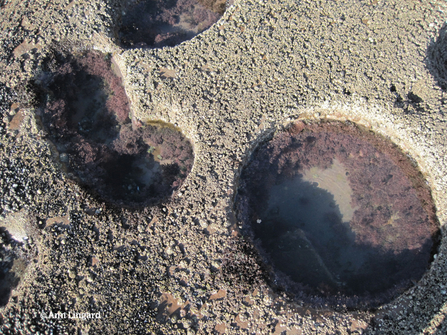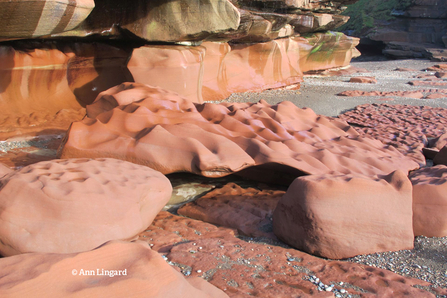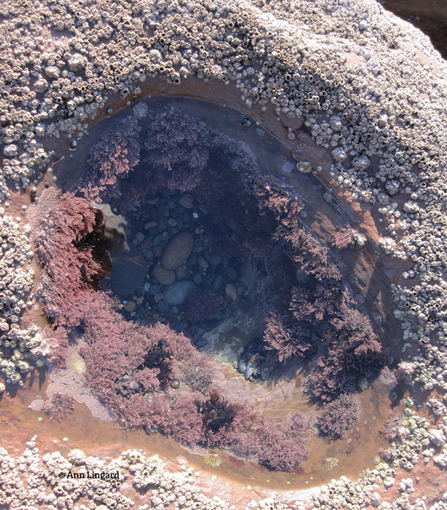I love all these marginal areas, especially the changeable edges of the Upper Solway, the saltmarshes and mudflats which are home to millions of invertebrate animals – mudsnails, pink-shelled tellins, mudshrimps and ragworms – and billions of microscopic animals and algae from bacteria to diatoms. But, because I grew up close to the rocky coves of South Cornwall, Fleswick Bay just North of St Bees fits more neatly with my ingrained perception of ‘sea-shore’
Visting the Solway shore
Ann Lingard

Ann Lingard
To the South of St Bees is the Cumbria Coast Marine Conservation Zone, designated for the wealth of intertidal life amongst the rock pools, and in the 1960s basking sharks were frequently seen just off the Bay. The cliffs are famously the summer home of huge numbers of breeding seabirds like guillemots.
As I walked over the cropped grass of the cliff-top on a wintry and blustery day, shags were paragliding straight-winged, leaping from the cliff’s ledges and swooping downwind before looping back to do it all again; one after another after another, mesmerisingly repetitious.
To reach the bay you must slither down a slimy track strewn with windblown plastic and wrack, and through a narrow entrance that reveals a V of shore and sea – and then suddenly you are out into the vast amphitheatre of Fleswick Bay, an echo-chamber reverberating with the sound of waves and gulls. Wet pebbles roll like ball-bearings, their colours gleaming, and on that day ragged clumps of foam were being blown along the shore, torn from the glistening white mounds that fringed the incoming tide.

The new red sandstone of Fleswick Bay © Ann Lingard
Fleswick is a monument to the beauty and the geological story of New Red Sandstone. Huge rounded and undercut figures and abstract shapes huddle beneath the cliffs, and the platform that reaches out into the sea is patterned with lithified ripples.
The sculpting by waves and water-stirred stones has created delicate hollows and ridges in the glowing stone, and the scattering of coloured pebbles, sand grains, shadows, and the changeable light, challenge perspective and perception.

© Ann Lingard
There are deep pools too, their walls coated with barnacles and crusty pink tufts of the seaweed Corallina, and hosting Beadlet Anemones, red or dark green, spreading their tentacles to trap their prey. And to the northern end of the rocky platform are low mounds of close-packed tubes built by the Honeycomb Worm, Sabellaria alveolata; constructed of sand grains laid edge to edge. Although the tubes seem incongruously delicate against the wave-pounded rock, the colonies continue to survive and grow.
It takes time and a little effort to reach Fleswick bay, but it’s worth spending more time to enjoy its minute and magnificent details.
Ann Lingard
Ann Lingard (Dr Ann Lackie) is a novelist and nature writer.
